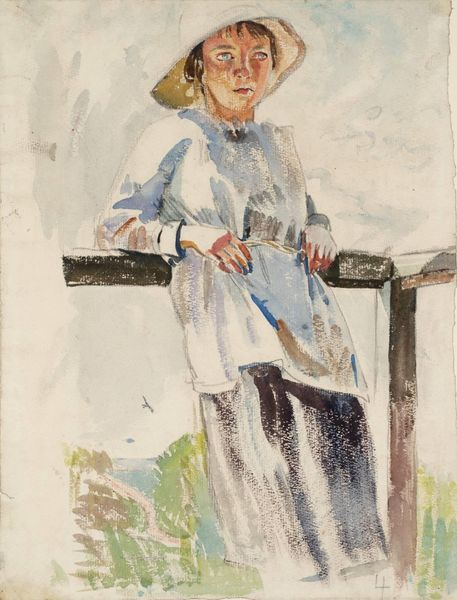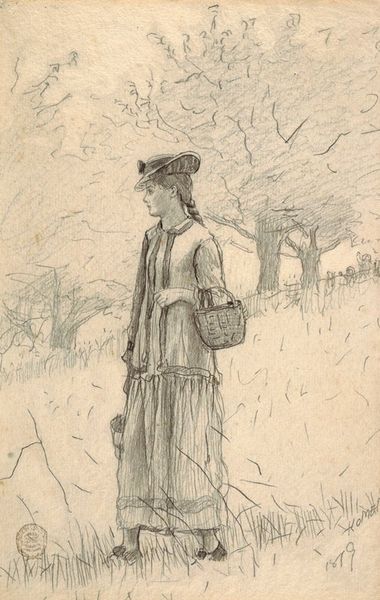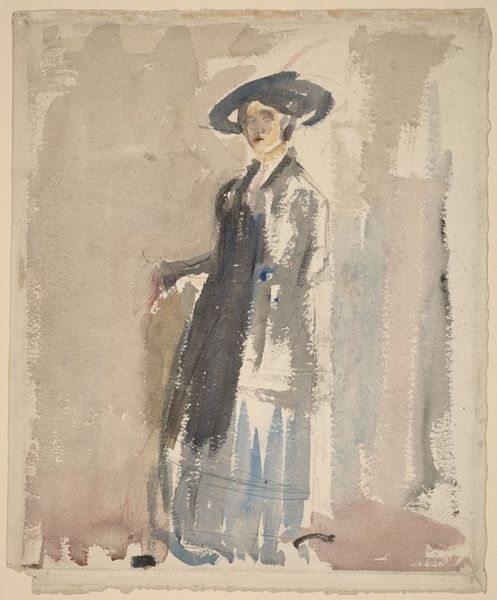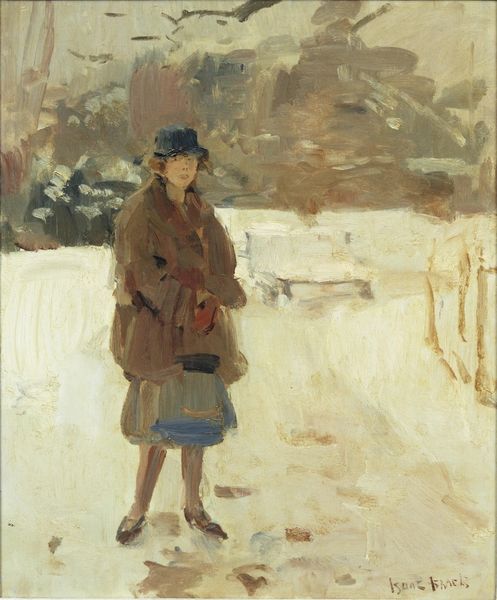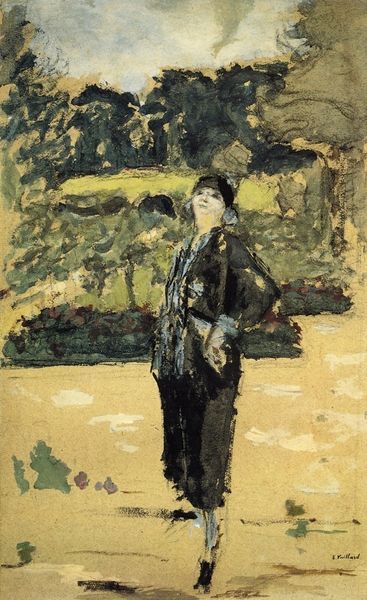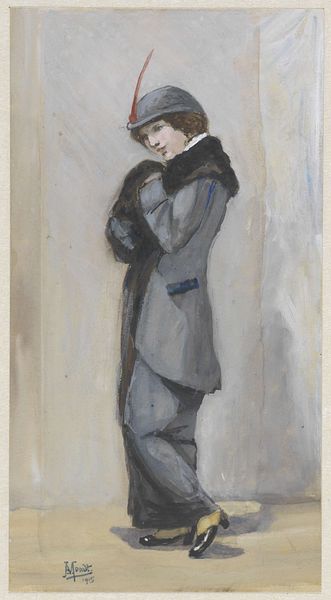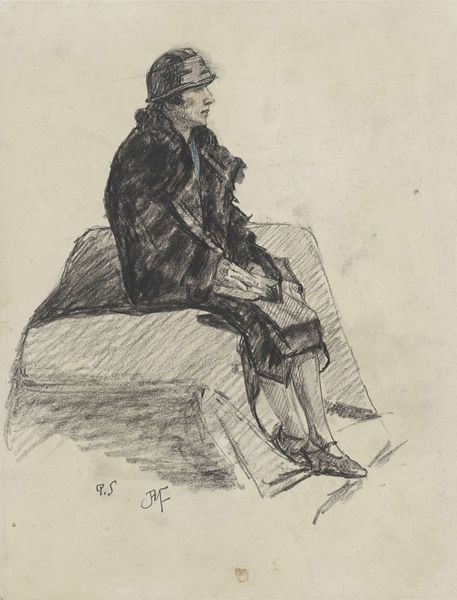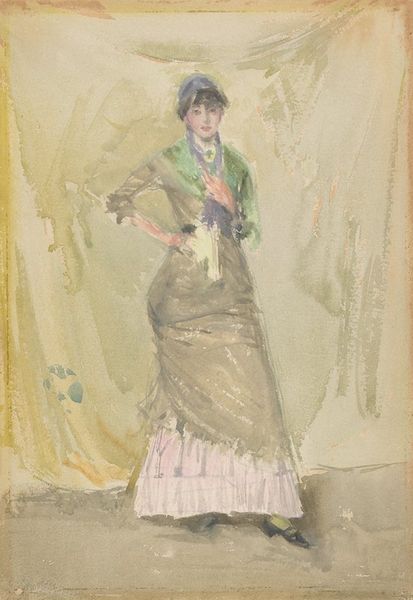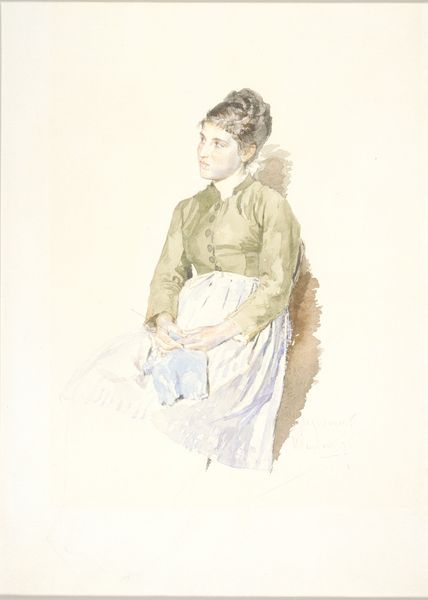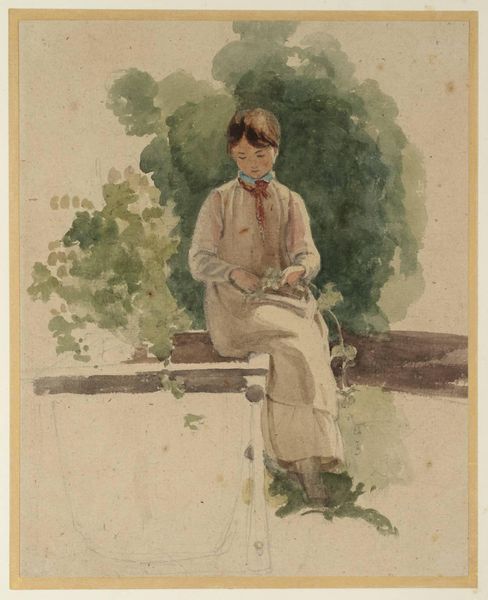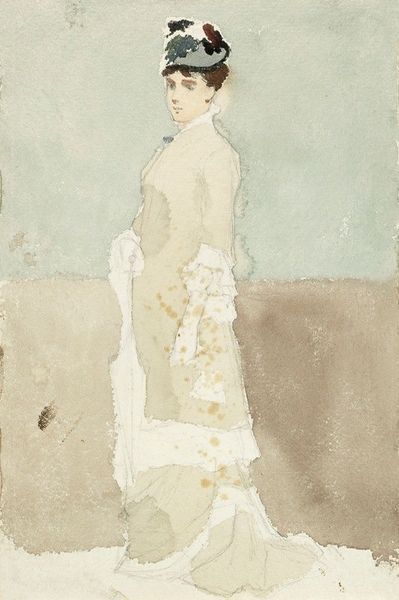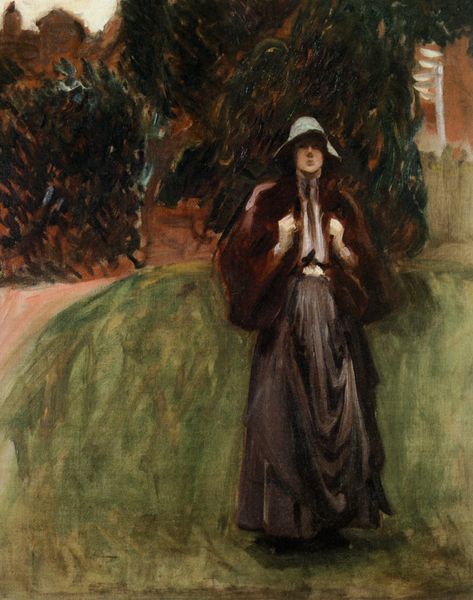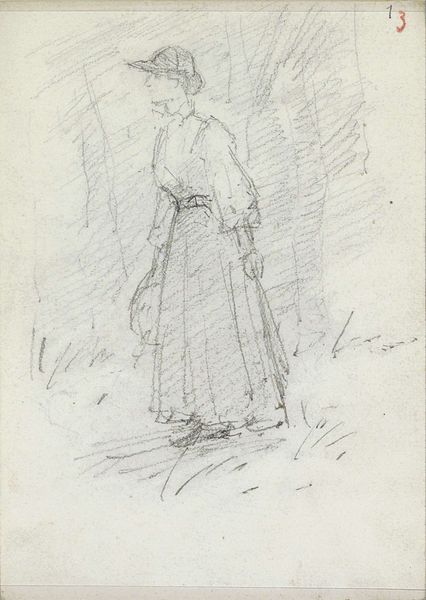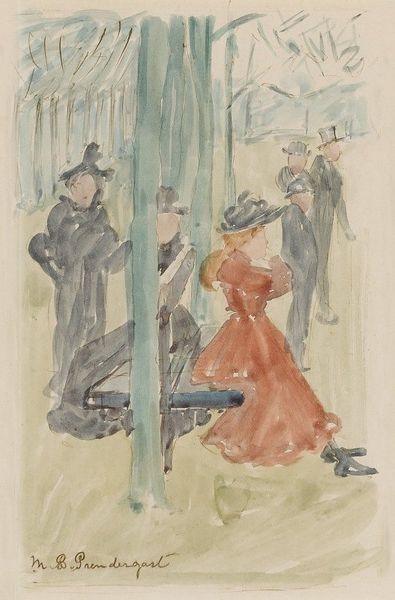
watercolor
#
portrait
#
figurative
#
impressionism
#
landscape
#
figuration
#
watercolor
#
coloured pencil
#
underpainting
#
genre-painting
#
watercolor
Copyright: Public Domain: Artvee
Editor: This is "Woman Walking," a watercolor by Jean-Louis Forain, dating to the late 19th or early 20th century. There's a quiet, almost melancholy feel to it, maybe because she's alone in a rather hazy landscape. How would you interpret Forain's depiction of this woman in her environment? Curator: It’s fascinating to consider the social context of this piece. Forain was working in a period where the flâneur—the male urban observer—dominated artistic depictions of modern life. A woman walking alone invites questions. What's her class? Her destination? Her emotional state is more ambiguous. Is she a bourgeois woman enjoying a stroll, or something else entirely? What do you notice about her dress? Editor: She's dressed quite formally, suggesting some affluence. But her gaze is averted. Is Forain challenging the typical representation of women at the time? Curator: Absolutely. Instead of objectifying the woman, Forain offers a more nuanced perspective. Her averted gaze could be read as a sign of introspection or perhaps a deliberate rejection of the viewer’s gaze. Moreover, watercolor was often considered a less 'serious' medium than oil, challenging academic norms when used for a subject of this type. Does that framing resonate with you? Editor: That adds a new layer! So the medium and subject choice are both potentially subversive acts in the artistic climate of the time? Curator: Precisely. Forain, through these choices, subtly critiques the established order, hinting at the complexities and perhaps the constraints placed upon women in Parisian society at the turn of the century. Editor: I never considered how much a seemingly simple stroll could reflect larger societal issues. Thank you! Curator: Indeed, art often functions as a silent commentary on the world in which it was created. I found your question revealing.
Comments
No comments
Be the first to comment and join the conversation on the ultimate creative platform.
